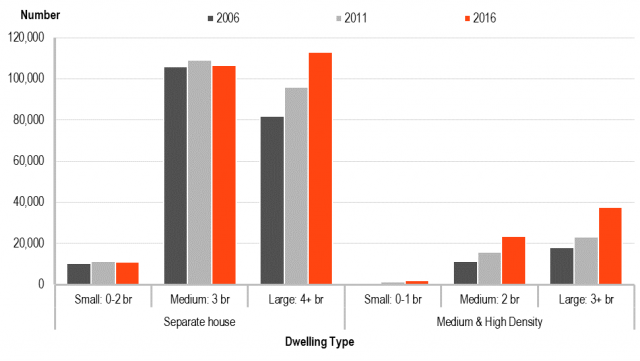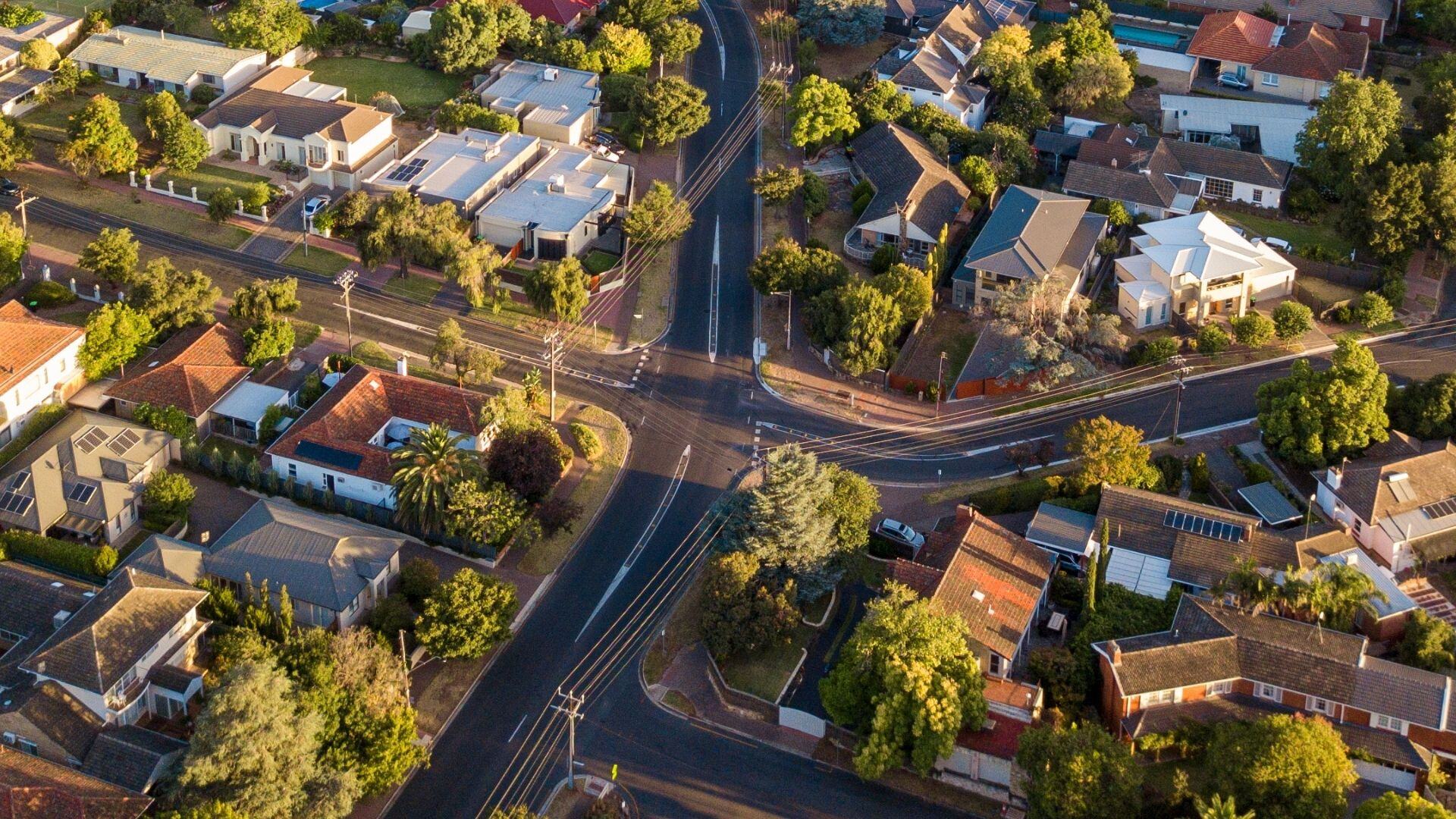In a recent survey conducted by social researchers Ipsos, Housing was revealed as the fastest growing issue of the top five issues concerning Australians.
This is the first in a series of blogs in which we’ll share the stories of one community that is working to address that issue.
Jump ahead to the first blog in the series: Fostering family-friendly flats
Through the lens of work we’ve done with The City of Moonee Valley in Victoria, we will look at the changing community attitudes about housing, and the challenges faced by local government planners as they work to ensure a supply of affordable, appropriate housing in their communities, while doing their best to preserve neighbourhood character, amenity and the population necessary to keep a healthy range of local services running.
This project has been a collaboration with the highly regarded journalist and broadcaster Peter Mares. Peter has written a series of case studies to hear the experiences of real people living in Moonee Valley, which we will be presenting alongside our analysis of important economic and demographic stories, to show the complex and often overlooked ways in which housing can impact social and demographic change.
For the planners
If you’re a strategic planner responsible for land-use policy, you may wish to learn more about housing.id – the framework we’ve applied in this work to help Moonee Valley understand the impact of demographic change on housing demand, refine housing objectives and develop clear policies to achieve those objectives.
We’d also be interested to hear what challenges you’re facing in your area – let us know here.
The link between housing and demographic change
In 2017, we worked with the City of Moonee Valley to analyse the housing implications of a changing population in the area. The purpose of the analysis was to help inform the development of the council’s strategic plan for housing.
To achieve this, we set out to understand the existing and future relationship between housing diversity and demographic change in Moonee Valley. Our goal was to highlight the important, emotive and multi-faceted role that housing plays in urban communities, so we developed a methodology consisting of two major components.
1. Demographic analysis
A demographic and housing analysis using trusted techniques including a role and function analysis, dominant/emerging analysis and .id’s forecasts of population and households
2. Case studies
As mentioned earlier, we collaborated with the highly regarded journalist and broadcaster Peter Mares to research seven targeted case studies, highlighting the housing stories of local community members in Moonee Valley. These case studies capture diverse perspectives from within the Moonee Valley community, ensuring the focus of the housing narrative remains on individual places, people and lived experiences.
Part 1: Higher-density living for families
Increasingly, couples with young children are living in smaller dwellings.
In particular, young families are increasingly opting for medium density housing such as terraces and townhouses, as well as (to a lesser extent), high-density flats and apartments. This is not because it’s ‘all they can get into’, but because higher density living lets them access and enjoy a lifestyle they probably couldn’t if they were on a quarter-acre-block-with-a-backyard-for-the-kids.
One of the dominant trends we see across inner- and middle-ring Local Government Areas (LGAs), is the shift in housing consumption patterns towards smaller dwellings because of demographic trends, changing preferences, affordability and the agglomeration of jobs in inner cities.
The chart below shows that while the number of Couples with young children living in separate houses with 3 bedrooms has been relatively stable, there has been a steady increase in separate houses with 4 bedrooms in Greater Melbourne over the period 2006-2016.
But there is now a trend (if little remarked upon) that young families are living in medium and high density housing more than ever before. In 2016, over 20% of couples with young children lived in dwelling types that included semi-detached townhouses, terraced houses, villa units, flats and apartments. This is up significantly from 13% back in 2006.

Figure: Couples with young children, by dwelling type – Greater Melbourne 2006-2016
Source: ABS Census of Population and Housing, 2016, 2011, 2006
It’s not the size of the dwelling that matters, but the ease of getting out
This is the point where we felt a case study might shed light on why we’re seeing this trend.
We’ve pointed out that the shift in housing preferences is mainly represented by the growth in families in medium density dwellings. However, our analysis has found that high-density dwellings potentially have an important role to play in providing housing opportunities for young couples with children. As shown in the case study below, couple Kim and Matthew, along with their son Edwin, believe that flats and apartments should be considered a viable housing option for more than just smaller household types.
Their story doesn’t just explain why we’re seeing the trend, but shares some clues for council planners and developers who might want to attract young families to the area; that with improvements to the design of apartments, supporting infrastructure and open space access, more families can enjoy the social and environmental benefits of high-density living.
Case study: higher density housing is for families too
|
Melbourne couple Kim and Matthew live with their son Edwin in a 1960’s-era block of flats in the inner-city suburb of Essendon. They believe that more young couples like them should view apartments and flats as suitable places to raise children, and that higher-density housing should be designed with families in mind.
Understanding the housing needs and preferences of young families is increasingly important. Couples with young children is the dominant household type in our capital cities, comprising 18% of all households. This group is also likely to grow strongly over the coming decades.
Kim pointed out that if we can move beyond our obsession with the large family house and backyard, many more families can enjoy the benefits of apartment-living. “Flats are seen as transient, just for renters, and that’s a shame because more families living in apartments would transform the feel of our suburb”.
For Kim, Matthew and Edwin, living in a flat has many advantages, namely that it provides them with easy access to the great cafes, green spaces and services in their local area. It has also enabled Kim and her family to connect with their neighbours through converting the flat’s common area into a shared native garden. With the Melbourne CBD just a short hop away by public transport, the family is within reach of everything they need.
While the benefits of inner-city living are attracting an increasing number of young singles, couples and families, the demand is also pushing up house prices. “I don’t know anyone who can afford a house within 10 kilometres of the CBD,” Kim says. Indeed, the cost of detached housing in Australian cities is influencing the decision of families to occupy apartments and townhouses.
However, as Kim suggests, encouraging more families to live in apartments depends largely on improvements to the design of high-density dwellings. In the absence of a private garden, families need access to shared outdoor spaces where they can grow food and children can play. More apartment complexes should integrate communal gardens and safe play areas, with the added benefit of fostering connections between neighbours.
|
What is driving this trend?
Several factors are influencing this trend.
- Amenity: As the case study highlighted, many inner and middle ring LGAs are home to great cafes, parks and services.
- Agglomeration: Furthermore, our economy is transitioning towards knowledge-intensive jobs, making inner- and middle-ring LGAs popular with young adults, particularly students, singles and couples, seeking housing close to employment, education and entertainment opportunities.
- Affordability: Households, like Kim, Matthew and Edwin, are more willing to trade-off house size for lifestyle and income, particularly in light of rapidly-increasing house prices, which have made it difficult for many households to buy in a 3 bedroom house.
- Ageing: Demographic trends including the ageing of the population mean that smaller household types are growing strongly. These social and demographic trends are driving demand for smaller, more affordable and easier to maintain dwellings.
What does this mean for housing policy?
As our cities continue to evolve, it is critical that we think about the way they accommodate family households.
Rapid population growth is placing greater emphasis on higher-density housing types in major urban centres. And, as we saw with the story of Kim, Matthew and Edwin, with improvements to the design of apartments, as well as changes in the way we think about housing preferences, more families can enjoy the social and environmental benefits of high-density living.
Stay tuned for the next blog in this series, when we’ll explore the importance of responding to the changing housing preferences of people as they grow older.
Are you a local government planner?
We would love to hear about the housing challenges you’re facing in your area. Get in touch with us here to share your story.
Or you can access our free suite of demographic and economic resources via our demographic resource centre.


.png)







